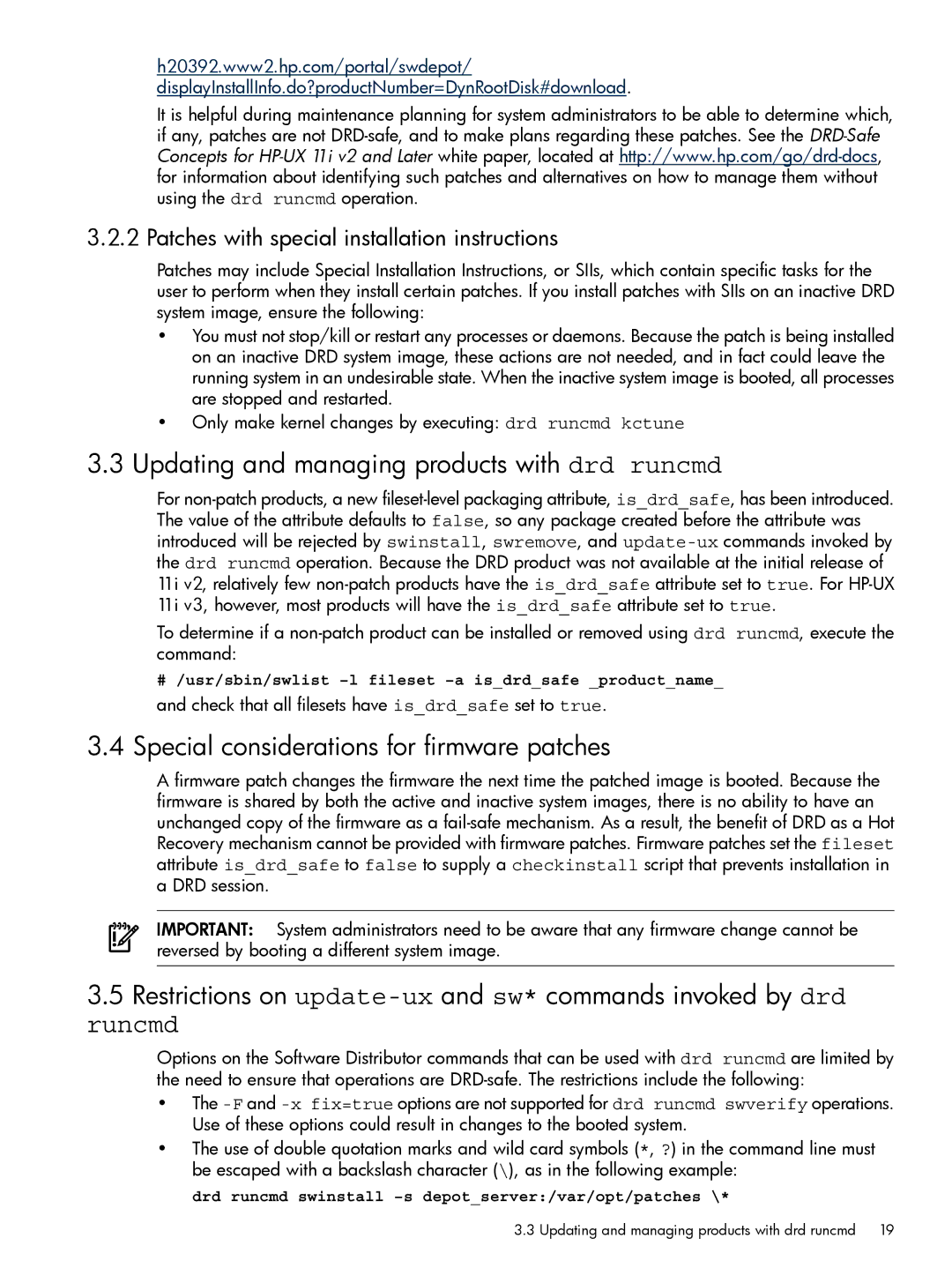h20392.www2.hp.com/portal/swdepot/ displayInstallInfo.do?productNumber=DynRootDisk#download.
It is helpful during maintenance planning for system administrators to be able to determine which, if any, patches are not
3.2.2 Patches with special installation instructions
Patches may include Special Installation Instructions, or SIIs, which contain specific tasks for the user to perform when they install certain patches. If you install patches with SIIs on an inactive DRD system image, ensure the following:
•You must not stop/kill or restart any processes or daemons. Because the patch is being installed on an inactive DRD system image, these actions are not needed, and in fact could leave the running system in an undesirable state. When the inactive system image is booted, all processes are stopped and restarted.
•Only make kernel changes by executing: drd runcmd kctune
3.3Updating and managing products with drd runcmd
For
To determine if a
#/usr/sbin/swlist
3.4Special considerations for firmware patches
A firmware patch changes the firmware the next time the patched image is booted. Because the firmware is shared by both the active and inactive system images, there is no ability to have an unchanged copy of the firmware as a
IMPORTANT: System administrators need to be aware that any firmware change cannot be reversed by booting a different system image.
3.5Restrictions on
Options on the Software Distributor commands that can be used with drd runcmd are limited by the need to ensure that operations are
•The
•The use of double quotation marks and wild card symbols (*, ?) in the command line must be escaped with a backslash character (\), as in the following example:
drd runcmd swinstall
3.3 Updating and managing products with drd runcmd 19
